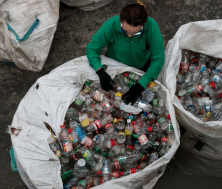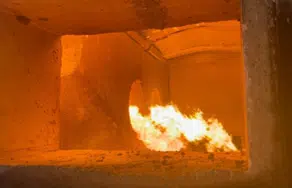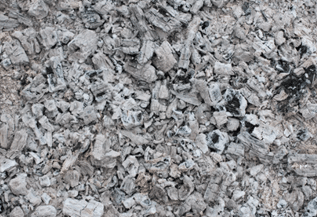How does an incinerator work?
Introduction
In an era of growing concern for environmental sustainability, the process of incineration has gained renewed attention as a potential solution for managing waste, with the potential to generate energy. Incineration involves the controlled combustion of materials at high temperatures, transforming them into ash, gases, and heat. This article delves into the inner workings of incineration and its role in waste management and energy production.
The Basics of Incineration:
At its core, incineration is the process of burning waste materials in specialized facilities known as incinerators. The goal is to reduce the volume of waste, minimize its hazardous nature, and potentially recover energy in the form of heat. Incineration is typically carried out within a controlled environment to ensure efficient combustion and reduce emissions.
The Incineration Process:
1. Waste Reception and Preparation

The first step involves sorting and preparing waste materials. Various techniques are used for waste separation, but the most common is manual sorting. The purpose of the waste preparation is to remove all non-combustible or recyclable materials, leaving only waste that is suitable for incineration. The waste can then either be shredded to create uniform-sized particles, facilitating even combustion, or directly fed into the incinerator, which may result in spiking of incinerator temperature that will need to be controlled.
2. Combustion
The waste is fed into the incinerator primary chamber. The burners, which can use a variety of fuels such a diesel or LPG, generate heat for the incinerator. The primary combustion zone reaches temperatures between 750 to 1000 degrees Celsius. In this environment, organic materials break down, releasing heat and flue gases. The flue gas consists of water, carbon dioxide and depending on the type of waste that is burnt, volatile organic compounds (VOCs). It is important to ensure sufficient combustion air is supplied to prevent the formation of carbon monoxide, which poses a serious health risk.

The Combustion Process ↑
Burners can use a variety of fuels such a Diesel or LPG.
3. Gas and Heat Recovery
The hot gases produced during combustion are directed to a secondary combustion chamber or post-combustion zone. Here, the temperature remains at approximately 1000 degrees Celsius, ensuring complete combustion of any remaining pollutants. The heat generated can then be captured and used as thermal energy such as in the production of steam or hot water. The secondary chamber also allows for settling of fly ash that could be carried across from the primary chamber.
4. Air Pollution Control
Before being released into the atmosphere, the gases produced in the incineration process are subjected to rigorous air pollution control measures. These include the removal of particulate matter, acidic gases, and other pollutants most commonly through the use of scrubbers or filters. Fly ash, a fine particulate residue, is also captured and managed according to environmental regulations. Depending on local regulations, a Continuous Emission Monitoring System (CEMS) might also be required.
5. Residue Management

The remaining ash from the incineration process, called bottom ash, is collected and disposed of in a controlled manner. In some cases, this ash can be further processed to recover metals for recycling. The bottom ash is then removed from the incinerator either manually by the operator or automatically. This ash can then be safely disposed of in a landfill.
Benefits and Concerns
Incineration offers several benefits, including a significant reduction in the volume of waste, efficient energy recovery, and minimized landfill use. By converting waste into energy, incineration can contribute to reducing greenhouse gas emissions when compared to traditional landfill disposal. However, concerns remain about emissions and potential environmental impacts, prompting the need for advanced air pollution control technologies and strict regulatory oversight.
Conclusion
Incineration is a complex process that has the potential to address waste management challenges while generating valuable energy. As technology continues to advance, incineration facilities are becoming more efficient, cleaner, and capable of recovering more energy from waste. While it’s not a one-size-fits-all solution and requires careful consideration of environmental impacts, incineration can play a role in the broader strategy to manage waste and promote sustainable energy generation.
Author: Devon Shepherd
Mechanical Engineer @ Macrotec
